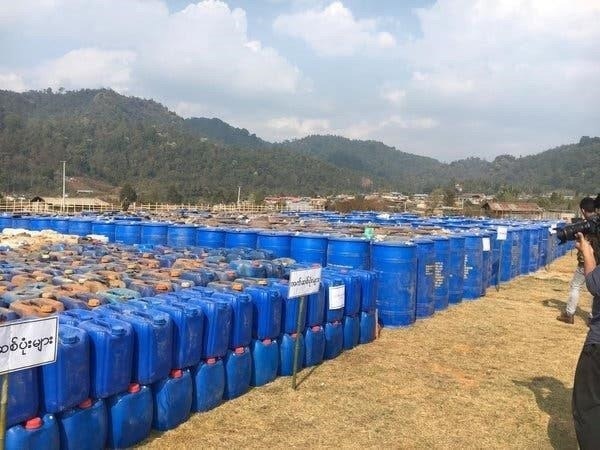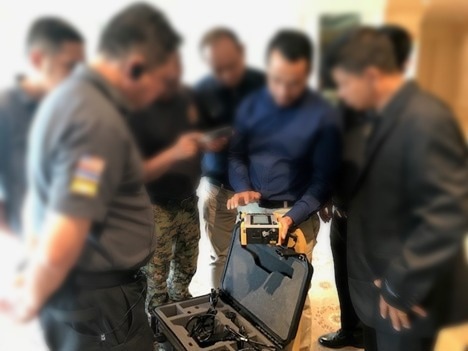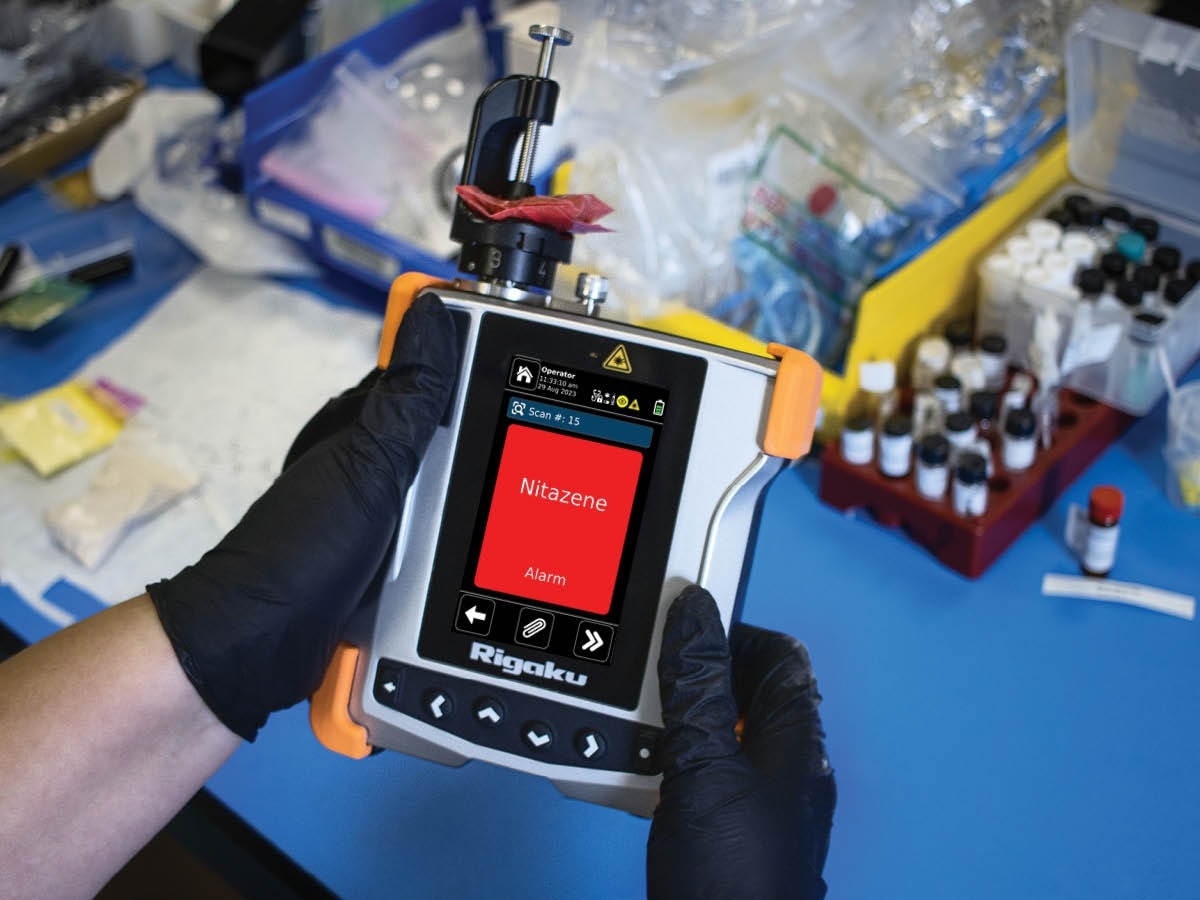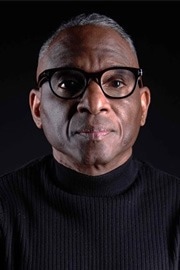AZoMaterials spoke with Michael W. Brown from Rigaku Analytical Devices about deploying handheld Raman spectroscopy in Myanmar to disrupt the supply of precursor chemicals used in methamphetamine production throughout Southeast Asia.
Rigaku’s analyzer was introduced in Myanmar to investigate the flow of illicit precursor chemicals. Can you describe that mission and its broader impact on regional interdiction?
I'm currently the Director of Counter Narcotics Technology at Rigaku Analytical Devices, the company behind the handheld Raman spectroscopy instrument – a device that utilizes a laser to identify unknown substances in the field.
From 2017 to 2019, I served as the DEA attaché in Myanmar, based at the U.S. Embassy in Yangon. My job was to lead all counter-narcotics activities, coordinate with other embassies, and brief the ambassador on strategies to counter Myanmar’s illict drug threat, which stretches across Southeast Asia.
Myanmar is one of the largest producers of methamphetamine in the world. From there, much of its methamphetamine is shipped throughout Asia.
The chemicals needed for meth production mostly come from China, entering Myanmar at Muse, a city on the northern border. From there, they’re moved into Eastern Shan State, where clandestine labs operate. Thousands of vehicles cross this border daily, but despite its international status, the crossing remains largely unregulated.
Border officials lacked technology, such as drug detection tools, and proper training. For decades, precursors have slipped into the country in unmarked containers – 55-gallon drums of potassium permanganate or phenyl chloride disguised as hydrogen peroxide, for example. Language barriers, poor documentation, and pressure to keep trade flowing all made matters worse.
I met with the Myanmar’s Drug Enforcement Division (DED) in Yangon to find solutions. Since methamphetamine is entirely synthetic, the production chain collapses if you cut off the chemicals. Our top priority was stopping the chemical flow by equipping the DED with technology that could spot precursors and allow for legal seizures.
At the time, I knew nothing about Raman spectroscopy. After some research, I found Rigaku’s CQL handheld Raman analyzer, which could identify around 13,000 different substances, including precursors, explosives, narcotics, and more. Other portable devices I looked at had smaller databases and weren’t built to withstand Myanmar’s harsh environment.
I reached out to Rigaku to figure out how many units we’d need to launch a border interdiction program, which we called “Operation Viper.”
The goal was to buy enough Raman devices to inspect at least 45% to 50% of all cargo coming into Myanmar before it could disappear into the road networks of Eastern Shan State – areas we couldn’t monitor due to limited manpower.
By increasing the risk and cost to traffickers, our aim was to significantly disrupt the supply chain, making smuggling far less attractive. We came close to that goal.
As a pilot, I managed to purchase three Rigaku Raman analyzers funded through the U.S. Embassy’s Bureau of International Narcotics and Law Enforcement (INL), the division that supports DEA’s international anti-drug operations. This was a chance to address Southeast Asia’s meth problem at its source.
After buying the first units, I partnered with Florida International University (FIU) and Rigaku to run a basic training course for ten DED officers (including the Lab Director) in Fort Lauderdale, followed by a three-day training in Myanmar.
Within two months of deploying the three-unit pilot, border officials had seized 16–17 tons of precursor chemicals that previously slipped through due to mislabeling.

Image Credit: Rigaku Analytical Devices
From your experience, what were the most surprising or difficult aspects of tracking precursor chemicals in such a complex international landscape?
As DEA agents we are usually expected to make arrests and prosecute traffickers, not seize chemicals. In Myanmar, DEA agents can’t work directly with police, so my role shifted to providing information, training, and support so local police could act. But even they couldn’t always pursue traffickers operating in military-protected zones.
The only way to really impact Myanmar’s meth production was to disrupt the supply chain so other countries could go after the criminal organizations themselves.
One major bust involved a large depot where traffickers were redistributing chemicals and equipment. The DED gave me tags and serial numbers for everything found with the Rigaku Raman unit, which let me track chemical suppliers and send the information to the DEA to target them directly. The program’s success was so disruptive that traffickers even targeted one checkpoint, destroying a Raman unit.
In my 32 years with the DEA, across Central and South America, Southeast Asia, Pakistan, and Afghanistan, I had never seen traffickers target technology used by officers. That was a wake-up call: the chemicals had become even more valuable than the drugs themselves.
Fast forward to where we are today in 2025, the DEA has begun adopting this approach in Southeast Asia after seeing its effectiveness.
Meanwhile, traffickers have adapted. They set up front companies to import unregulated chemicals under the guise of legitimate business. Traffickers have started mixing unregulated chemicals to create alternative precursors, which can then be used to make methamphetamine.
If I had had more funding and time, I believe we could have significantly reduced meth production and its downstream impact, cutting off the supply that fuels drug problems throughout Asia, which could have greatly improved public health and safety.
For Myanmar, Rigaku’s Raman devices proved to be among the most effective tools for intercepting precursor chemicals.

Image Credit: Rigaku Analytical Devices
What trends in trafficking operations worry you most these days, whether it’s tech, dark web markets, or changes in supply chains?
Before the coup and the embassy’s closure, the DEA could have partnered more closely with Myanmar, but global drug enforcement still measures “success” by arrests, drug seizures, and confiscated cash, not by choking off production or precursor supply chains.
Every cartel needs six critical capabilities to function: secure communication (often encrypted); the ability to procure chemicals and pay for them (through banks and front companies); transportation for precursors (by parcel or shipping containers); money laundering; clandestine laboratory for production capabilities; and, most importantly, moving finished product to distribution networks.
When I broke these down, I looked for the weakest link to disrupt. Secure communications and transportation are hard to attack at scale. Money laundering can be complex, while clandestine laboratories can be difficult to discover. But border control, inspecting what comes into the country, is more manageable, provided you have the right technology.
Still, inspecting every single shipment would grind trade to a halt, costing both countries money even as it solves the drug problem. But Myanmar and the U.S. need to focus on stemming the flow of meth and fentanyl precursors.
A 100% inspection policy, using the right technology, could play a major role in cutting the flow of fentanyl and its precursors dramatically.
How has analytical technology, like Rigaku’s handheld devices, evolved to meet the needs of law enforcement and public health agencies?
Rigaku's Raman devices have demonstrated unique impact in Myanmar's interdiction efforts. Since 2018, border staff have seized billions of dollars’ worth of chemicals intended for meth labs in Australia, Japan, Taiwan, and elsewhere.
Raman technology becomes even more critical as narco-chemistry evolves. It’s not enough to arrest cartel leaders; you have to dismantle the infrastructure that keeps their operations running. Rigaku’s handheld Raman analyzers aid in attacking that infrastructure by breaking down the chemical supply chain.
Raman devices are vital at border checkpoints, airports, seaports, and land crossings. Knowing exactly what’s entering your country is essential, especially as synthetic drugs grow to be a top threat.

Image Credit: Rigaku Analytical Devices
How have you seen the drug trade change, especially as synthetic drugs like fentanyl replace traditional narcotics?
Cocaine remains a problem, especially in Europe and the U.S. But narco-chemistry keeps changing. Nitazenes (a synthetic opioid 20 to 30 times stronger than fentanyl) are now emerging. They’re Schedule I, with no legitimate use.
Domestic traffickers can order nitazene precursors, or even nitazene as a finished product, then cut it with heroin from, to create new markets independent of major cartels. Because nitazenes are so potent, they’re starting to cut into the fentanyl market.
We’re seeing traffickers move from fentanyl to nitazene, including in Europe. Last year, only 50 kilograms of fentanyl were seized in Europe, but that’s still a massive number of pills. Cartels are reducing doses to hook users without causing mass fatalities, which would trigger crackdowns.
European traffickers are also making nitazene themselves, using precursors, already used for MDMA. Existing chemical routes and the EU’s open borders make this even easier.
This shift decreases reliance on Mexican cartels for meth and fentanyl, replacing them with local synthetic labs built on the old MDMA infrastructure.

Image Credit: Rigaku Analytical Devices
Beyond technology, how is Rigaku involved in the broader fight against the opioid crisis?
At Rigaku, we see handheld Raman technology as just one part of the broader solution. Combating the spread of dangerous narcotics takes more than advanced tools: it demands education, outreach, and meaningful engagement with the communities most impacted. That’s why I spend just as much time connecting with policymakers, law enforcement leaders, and public health officials as I do discussing the technology itself.
We’ve made it a priority to share real-world insights through active community outreach, whether through media interviews, conference presentations, or collaborations with advocacy groups. These efforts help stakeholders better understand the scale of the issue, the practical role technology can play, and the importance of a unified response. Rigaku’s mission goes beyond supplying analyzers: we’re committed to being a trusted partner in the fight against the opioid crisis from every angle.
You also host a podcast called The Opioid Matrix. How does that initiative fit into Rigaku’s mission?
The Opioid Matrix Podcast is about expanding the conversation. We bring together voices from every corner of the opioid crisis: law enforcement officers on the front lines, parents who’ve lost children, addiction specialists, harm reduction advocates, and even policymakers at the national level. Each perspective offers a unique piece of the puzzle in understanding how we can respond more effectively.
For Rigaku, the podcast reflects a core belief: technology alone isn’t enough. Real progress requires open dialogue, education, and collaboration across communities. By hosting this platform, we’re showing our commitment to listening and learning, not just innovating. It’s about being actively involved in the solution, not simply providing the tools.

Image Credit: Rigaku Analytical Devices
To conclude, how would you summarize Rigaku's position in the fight against synthetic drugs?
The fight against synthetic drugs is constantly shifting, and no single tool or agency can tackle it alone. What sets Rigaku apart is our belief that technology must be paired with education, outreach, and collaboration. By equipping frontline officers, engaging with policymakers, and creating platforms like The Opioid Matrix Podcast to encourage dialogue, we strive to be more than just a technology provider: we aim to be a true partner in protecting communities.
With a shared commitment and a focus on innovative, coordinated efforts, we can disrupt the networks driving the opioid crisis and help save lives.
About the Speaker

Michael W. Brown is the global director of counter-narcotics technology at Rigaku Analytical Devices. Over 32 years as a DEA Special Agent, he’s worked across the Middle East, Southeast Asia, and Central/South America. In Myanmar, he launched a strategy using Raman spectroscopy to stop illicit precursor chemicals from China, resulting in the seizure valued at approximately $250 million in mislabeled chemicals. He’s also served as a special advisor in Pakistan and as the DEA’s coordinator for foreign operations across the Middle East, Europe, Afghanistan, and India. Michael is a graduate of the US Army Ranger Training Battalion and holds a master’s degree in interdisciplinary technology and management from Eastern Michigan University.

This information has been sourced, reviewed and adapted from materials provided by Rigaku Analytical Devices.
For more information on this source, please visit Rigaku Analytical Devices.
Disclaimer: The views expressed here are those of the interviewee and do not necessarily represent the views of AZoM.com Limited (T/A) AZoNetwork, the owner and operator of this website. This disclaimer forms part of the Terms and Conditions of use of this website.